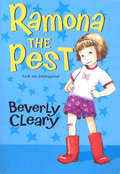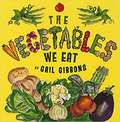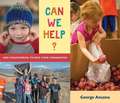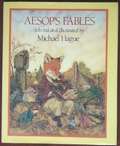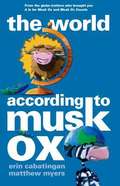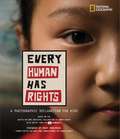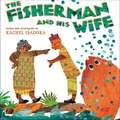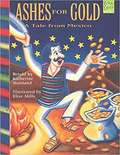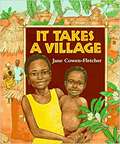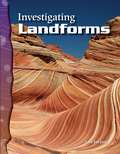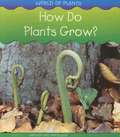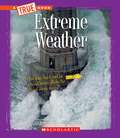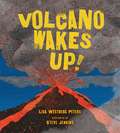Special Collections
District List: DCPS - Second Grade Unit Text List
Description: District of Columbia Public Schools Unit Text List for students in 2nd Grade. #dcps
- Table View
- List View
Ramona the Pest
by Louis Darling and Beverly ClearlyNIMAC-sourced textbook
Ramona Quimby is excited to start kindergarten. No longer does she have to watch her older sister, Beezus, ride the bus to school with all the big kids. She's finally old enough to take the bus too!
Then she gets into trouble for pulling her classmate's boingy curls during recess. Even worse, her crush rejects her in front of everyone. Beezus says Ramona needs to quit being a pest, but how can she stop if she never was trying to be one in the first place?
The Vegetables We Eat
by Gail GibbonsGlossy red peppers, lush leafy greens, plump orange pumpkins, and delectable little peas: vegetables come in many shapes, sizes, and colors. Leaf. . .root. . .stem. . . . These are three of the eight groups of vegetables. From how they are planted to how they get to stores, here is a wealth of information about them, including how to plant and tend your own vegetable garden.
This book does not contain images, only image descriptions.
Can We Help?
by George AnconaReal kids make a real difference in their communities in this vibrantly photographed chronicle by George Ancona.
George Ancona celebrates the joy of kids giving back. In one after-school program, middle-school students mentor and tutor younger children. Via a special partnership, schoolchildren help professionals train assistance dogs for people with disabilities. At a community farm, families plant, grow, and harvest produce for soup kitchens and charities. In these and other examples of volunteering, kids of all ages work together knitting hats and scarves for those who could use warm clothes, packing hot meals to deliver to housebound people, and keeping roadways clean. Young humanitarians reading these accounts may well be inspired to find ways that they can help, too.
Aesop's Fables
by Michael Hague and Aesop AesopThe noted illustrator presents thirteen of Aesop's most familiar fables.
The World According to Musk Ox
by Erin CabatinganFrom Africa to North America, Asia to the Arctic―our dynamic, hilarious duo are back and ready to travel around the world. Join a rowdy musk ox and a cantankerous zebra on the adventure of a lifetime―a tour through the seven continents!
Every Human Has Rights
by Mary Robinson and National Geographic Editors and Elderslie Township Historical Society StaffThe 30 rights set down in 1948 by the United Nations are incredibly powerful. According to the U.N., every human–just by virtue of being human–is entitled to freedom, a fair government, a decent standard of living, work, play, and education, freedom to come and go as we please and to associate with anyone we please, and the right to express ourselves freely. Every Human Has Rights offers kids an accessibly written list of these rights, commentary–much of it deeply emotional–by other kids, and richly evocative photography illustrating each right. At the end of this deceptively simple book, kids will know–and feel–that regardless of individual differences and circumstances, each person is valuable and worthy of respect.
The Fisherman and His Wife
by Rachel Isadora and Brothers GrimmThe fisherman's greedy wife is never satisfied with the wishes granted her by an enchanted fish.
Ashes for Gold
by Katherine MaitlandTricked by a clever acquaintance, a poor Mexican still manages to turn ashes into gold.
It Takes a Village
by Jane Cowen-FletcherOn market day in a small village in Benin, Yemi tries to watch her little brother Kokou and finds that the entire village is watching out for him, too.
Investigating Landforms
by Lynn GorpLandforms are features on the earth's surface that are made naturally. Mountains, plains, and plateaus are all examples of landforms. The study of landforms is called geomorphology. Scientists can learn about the past and even predict future changes by studying landforms. Today we can take pictures of landforms from airplanes and satellites.
How Do Plants Grow?
by Louise Spilsbury and Richard SpilsburyLooking inside a seed. We'll look at a cut-open bean seed and talk about the food store and the baby plant and the seed coat. The baby plant in a seed stays safe and warm inside the seed coat until it is ready to start growing, usually in spring when the weather is warm and wet.
Extreme Weather
by Ann O. SquireEvery day, the world's scientists are working to solve some of the most thrilling mysteries on Earth. This True Book series highlights some of the incredible ways that scientists search for answers to our biggest questions. Readers will discover how scientists conduct experiments in extreme situations, how some of the world's most advanced laboratories have benefitted scientists, and much, much more. Most days, you probably don't think too much about the weather. You might wear a coat on a cold day or carry an umbrella when it rains. But weather can be unpredictable. Downpours can flood entire cities, raging winds can knock down buildings, and huge piles of snow can block roads. Readers will find out how scientists study some of the most extreme weather on Earth, from violent tornadoes to deadly hailstorms. They will also learn about some of the most devastating weather events in history. Features: Engaging sidebars highlight some of history's most remarkable scientific discoveries Timelines illustrate the ways our knowledge of science has changed over time Glossaries explain difficult scientific terms in a way that makes them easy to understand Eye-catching images give readers an up-close look at scientific procedures
Wild Horse Winter
by Tetsuya HondaBased on an actual event, this suspenseful story tells the miraculous saga of a herd of beautiful wild horses and details the life of a young colt as it matures and follows the lead of its protective mother to overcome a wild, raging blizzard in the dramatic conclusion of their journey.
The soft paintings combine with the simple text to bring a vanishing breed vividly to life. A wonderful book for reading aloud or for sharing, the story subtly parallels the growth of all creatures and underscores the strong bonds that exist between parent and child.
Volcano Wakes Up
by Lisa PetersPlayful, kid-friendly poems from five alternating points of view explore the volcanic process and its effect on the surrounding land, flora, and fauna. From the lava crickets to the ferns, everyone has something to say about it! Follow one day--from sunrise to moonrise--on the slopes of a young, about-to-shout volcano.
Science-loving kids will get a kick out of this exciting look at an erupting volcano, and the creative poems offer something for everyone.

